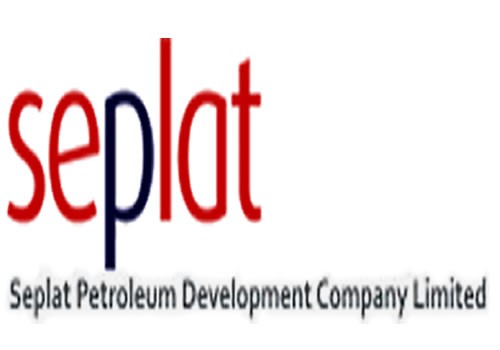Business
Seplat loses steam as oil price decline takes toll

The company’s market capitalisation currently stands at a diminished N150 billion. Its balance sheet size grew twice its value in 2013, from N189.71 billion to N444.02 billion in 2014. Again, analysts forecast show that the company’s expected investment in assets will rise by as much as N473.23 billion at the end of the current financial year, 2015.
The company achieved its peak performance in 2013 when earnings per share settled at N180.21. From this; N16 per share was paid as dividend to investors.
Though the company’s pay-out ratio was relatively low; this was attributed to emerging profitable investment commitments; reflected in the growth in net capital expenditure of about N57.7 billion in 2014 as against N2.64 billion expended in long term assets in 2013.
The company actually became more heavily indebted in 2014 when it accessed debt capital of about N52.5 billion.
It expansionary focus also saw an increase in equity of 82,157 which brought additional cash from its financing activities to N109.91 billion. The obligation on the borrowed fund saw interest payment rise to N7.92 billion from N974 million in 2013.
The company’s earnings per share history show constant improvement from 2011 to 2013. However, from 2013 to 2015, the future has looked increasingly gloomy. Indeed, dividend per share in 2015 is expected to drop heavily.
Earnings per share moved from N31.2 per share in 2011 out of which N4.38 was paid as dividend, to N56.01 in 2012 out which N14.05 was paid out to investors as dividend and in 2013 N180.21 per share earnings led to a dividend pay-out of N16 per share.
In 2014 the company’s earnings hit N73.16 per share but Seplat paid out a stingy N17.69 as dividend per share.
Analysts at ChapelHill -Denham security limited also noted that the firm’s future growth expectations are positive.
This means that its stock is a good prospect for investors that focus on long term performance. In its assessment of Seplat’s future profitability, the broker recommends a buy position.
According to the ChapelHill-Denham’s recent market report, given a target price of N382.50, Seplat has a potential upside of 41.3% from its current price of N270.
Also, the financial securities firm’s analysts are of the view that Seplat has steady dividend payment outlook given its history.
The company paid a dividend of N17.69 per its share in 2014, higher that N16 paid in 2013. This represents a dividend payout ratio and dividend yield of 24.2% and 8.9% respectively.
To confirm this, the company had stated its intention to be paying dividend annually.
“We are positive on the company’s long term outlook due to its impressive bouquet of oil and gas assets and the prospect for further acquisition”, Chapel Hill remarked.
It further provides that within the last five years, Seplat has acquired number of oil and gas assets, which the firm believe will drive further growth in earnings.
These assets include Oil Mining Lease (OML) 4, 38, 41, 53 and 55 among others.
These petroleum rights are located at Western Niger Delta basin of Edo and Delta States.
The company’s participation in OML 4, OML 38 and OML 41 is 45% each while its participating interest in OML 53 and 55 are 40% and 22.5% respectively.
Analysts expect the impact of the falling oil prices to outweigh the benefits of oil production volume growth in the financial year 2015 forecast.
The firm however forecast a 6.2% cumulative average growth rate in oil production between financial year 2014 and 2017, driven by production in OML 55 and 53.
Chapel Hill said that these two assets are expected to support its oil production growth forecast of 8% and 15% year on year in 2015 and 2016 respectively.
“We forecast 17.9% decline in Seplat’s revenue for financial year 2015, but expect 41.1% growth in revenue in 2016.
Our expectation of recovery in 2016 is based on likely rebound in oil prices coupled with higher production volume”, Chapel Hill stated.
Meanwhile, the indigenous oil company’s margins are expected to be weaker in 2015, Chapel Hill report reveals.
The firm expects gross margin to fall to 45.3% in 2015 financial year from 59.3% recorded in 2014. Some analyst who commented on this said that the change which is primarily due to lower oil prices may linger longer through to 2016.
In the first half 2015 result, the company’s earnings before interest and tax expenses before consideration for depreciation and amortisation dropped to 23.4% from 42.2% in the comparable period last year due to rig-related activity according to the Seplat.
Seplat financial result was hit in the first half also, on the back of dwindling oil market prices. Its revenue went down by 19% to N48.8 billion; from N60.3 billion in the first half 2014 amidst increased gross daily production.
Gross daily production shoot up by 53.6% to 84.4 million barrel per day from 52 million barrels per day at the end of 2014.
However, the management of the company said there were 52 full days of down time and 25 days of partial down time on the Trans Focardos Pipeline, a third party infrastructure in the first half 2015.
In the same vein, Seplat’s cash flow dropped materially to negative N34.59 billion in its six months operation scorecard from a positive disbursable cash of N63.81 billion in the comparable period last year 2014.
Chapel Hill said that the firm believes that the impact of fluctuating oil prices was reflected on reduced revenue to N124.3 billion from N136.7 billion in 2013.
In the analysts view, the industry is expected to experience more difficult times in 2015.
Again, the indigenous oil company will be further pressed by rising finance cost.
Chapel Hill analysts say that Seplat’s interest expenses is expected to increase by 103.2% to N16.08 billion in 2015 on the back of the $1 billion facility obtained in the first quarter 2015. The facility has a scheduled payment that commenced in June 2015, according to management.
Consequently, the financial securities firm said it expects the interest coverage ratio to fall to 1.6 times in 2015 financial year from 6.2 times in 2014.
Also, analysts expect growing production capacity to support improved profitability with the next two years and provide the cash stream to pay down existing debts.
“The company again has a 5-year pioneer tax status, which is applicable till 2017 on OML 4, 38 and 41. Nonetheless, we see net margin falling to 13.8% in 2015 from 32.5% in 2014 as interest expenses will likely expand by 2 times to N16.08 billion in 2015”.
We expect that low oil prices may spur further assets sales and presents more opportunities for indigenous oil companies”, the firm foretells.


